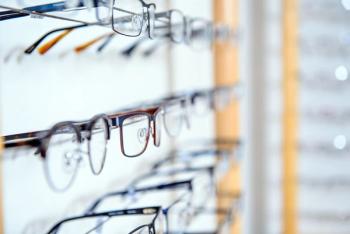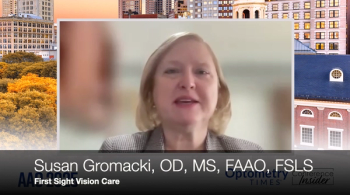
FDA clears meibomian gland dysfunction device
TearScience Inc. announced on July 11 that its proprietary thermal pulsation system received FDA clearance for the treatment of meibomian gland dysfunction, also known as evaporative dry eye.
Key Points
Morrisville, NC-TearScience Inc. announced on July 11 that its proprietary thermal pulsation system (LipiFlow) received FDA clearance for the treatment of meibomian gland dysfunction (MGD), also known as evaporative dry eye. The system removes meibomian gland obstructions by applying directed energy to a patient's eyelid during a 12-minute in-office treatment.
The system simultaneously applies regulated heat to the inner surfaces and pressure to the outer surfaces of the upper and lower eyelids. The safety and effectiveness of the device were demonstrated in a nine-center randomized, controlled clinical trial for the treatment of evaporative dry eye.
In the open-label clinical trial comparing the system with standard warm compress control therapy, the system met the primary endpoint with a statistically significant (p < 0.0001) greater improvement at 2 weeks from baseline in the average number of meibomian glands yielding clear liquid secretion as compared with the control, according to Tim Willis, chief executive officer of TearScience.
Effectiveness was assessed at baseline and at 2 and 4 weeks using meibomian gland score, the Ocular Surface Disease Index (OSDI) and Standard Patient Evaluation of Eye Dryness (SPEED) questionnaires, and tear break-up time (TBUT). A single treatment with the system provided sustained effectiveness, on average, over the 4-week study duration as shown by mean change from baseline in meibomian gland assessment, TBUT, and dry eye symptoms.
Follow-up examination
A separate study of a subset of the subjects treated in the clinical trial at a single center demonstrated sustained effectiveness using the same outcome measures with follow-up to 12 months after treatment with the system.
Jack V. Greiner, DO, PhD, clinical associate scientist, Schepens Eye Research Institute, and clinical instructor in ophthalmology, department of ophthalmology, Harvard Medical School, Boston, a member of the LipiFlow study group, examined a subset of the subjects treated in the clinical trial at a single center, the Boston Ocular Surface Center.
In this cohort of 18 subjects (36 eyes), follow-up examination demonstrated sustained effectiveness using the same outcome measures at 12 months after treatment with the device, as Dr. Greiner reported at the 2011 meeting of the American Society of Cataract and Refractive Surgery in San Diego.
Dr. Greiner initiated the follow-up examination of the cohort after realizing that many of the subjects in the original clinical study, who had reported regularly for in-office meibomian gland expression treatment, had not scheduled appointments, which were typically scheduled every 6 to 12 weeks. It was discovered after speaking with these subjects that many of them claimed they no longer suffered from or were only minimally affected by dry eye symptoms.
"The . . . system essentially combines the advantages of warm compress therapy and meibomian gland expression treatment," said Dr. Greiner, who also is associate clinical professor, Department of Ophthalmology, Tufts University School of Medicine, Boston.
Newsletter
Want more insights like this? Subscribe to Optometry Times and get clinical pearls and practice tips delivered straight to your inbox.


















































.png)


